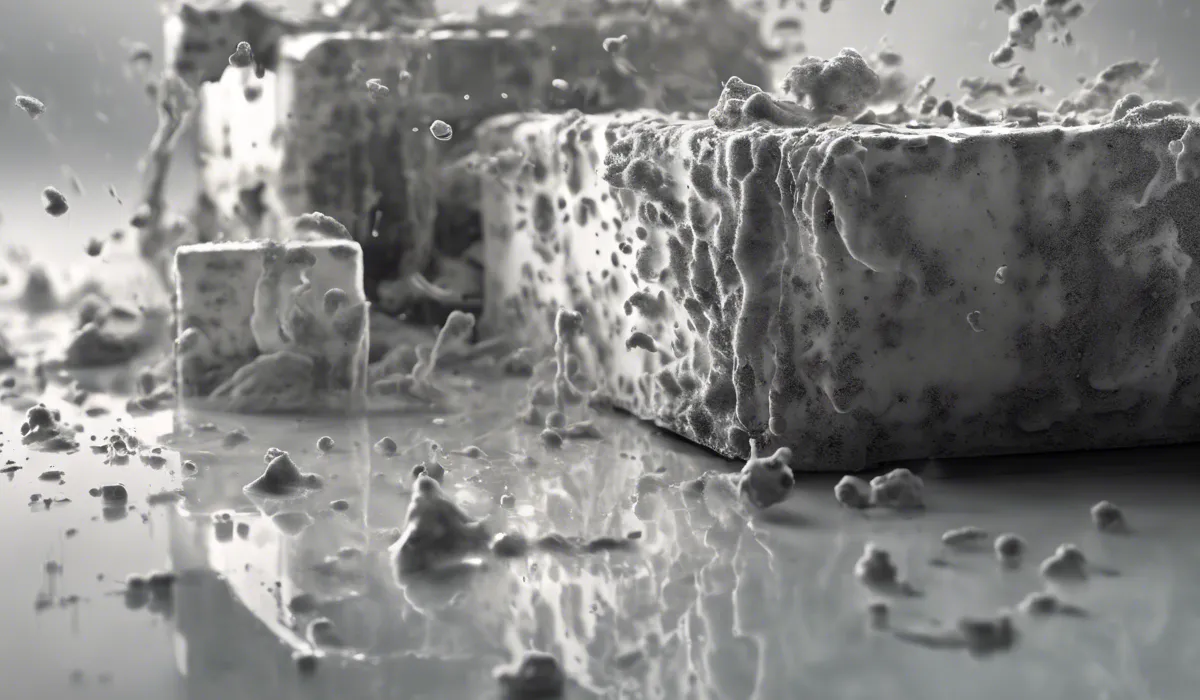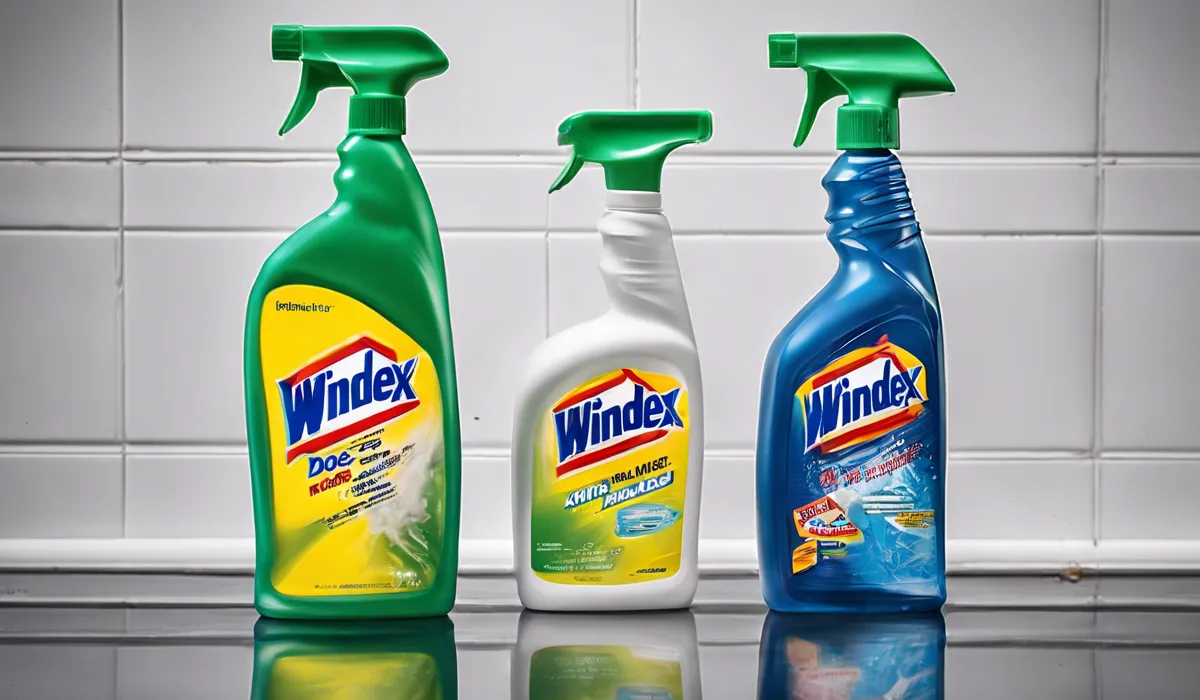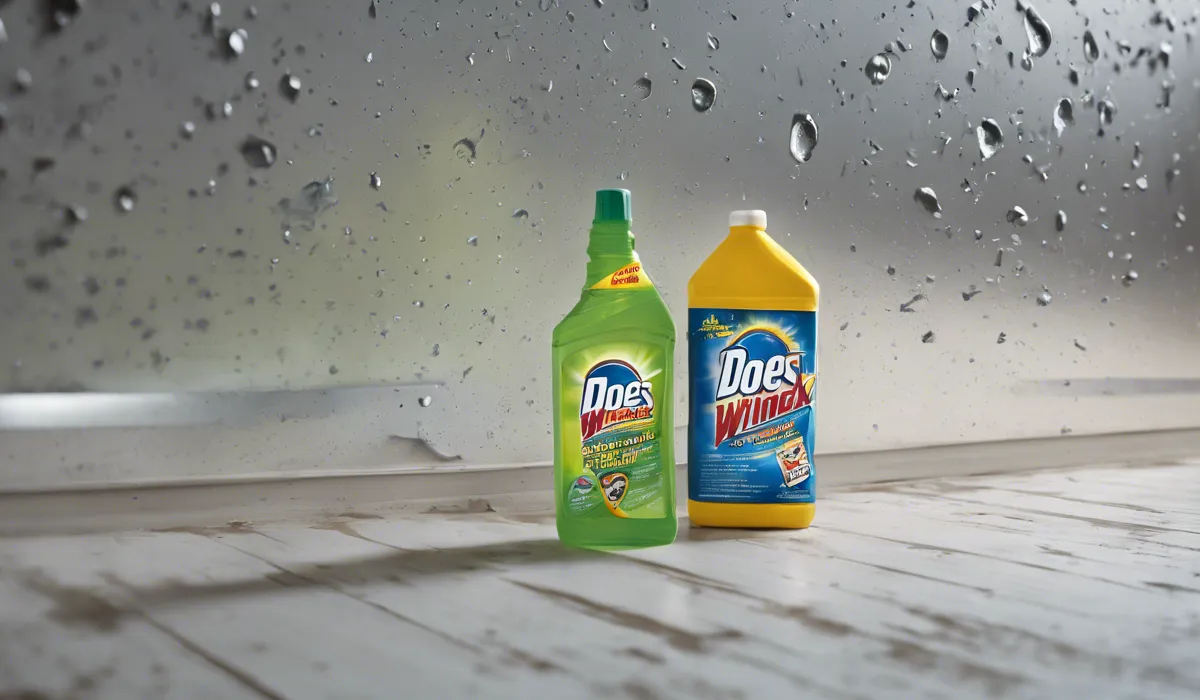Windex is not designed to kill mold. It may remove light mold stains but doesn’t effectively eliminate mold spores. For mold infestations, use a dedicated mold removal product instead of Windex.
Understanding Mold and Its Growth

What Is Mold?
Mold is a type of fungus that can grow both indoors and outdoors. It comes in various colors and shapes, reproducing by releasing tiny spores that travel through the air.
When these spores land on damp surfaces, they begin to grow and multiply, often creating visible colonies.
Mold is known for its ability to break down and digest the materials it grows on, which is essential in nature but can be problematic in our homes.
Conditions for Mold Growth
Mold thrives in moist, warm, and dimly lit conditions. It typically needs three things to grow: moisture, a food source like wood or drywall, and the right temperature.
Bathrooms, basements, and kitchens are particularly vulnerable to mold because they provide these ideal conditions.
Controlling humidity, fixing leaks, and ensuring good ventilation are key to preventing mold growth.
Common Mold Habitats
In homes and buildings, mold commonly appears in areas prone to moisture. This includes around leaky windows, in showers, under sinks, and in basements.
It’s also frequent in air conditioning systems and ductwork where condensation occurs. Regular inspections in these areas can help catch mold before it becomes a larger problem.
Health Risks of Mold
Exposure to mold can lead to health issues, especially for those with allergies or asthma. Symptoms may include coughing, sneezing, throat irritation, and skin rashes.
For individuals with weakened immune systems, mold exposure can be more severe. It’s important to address mold promptly to protect your health.
The Effectiveness of Windex on Mold

Windex Ingredients
Windex is a glass and surface cleaner whose main ingredients typically include detergents, solvents, fragrance, and ammonia.
While it’s great for streak-free shine on glass, it is not formulated to kill mold or mildew. It may clean surface dirt and light mold stains but doesn’t address the spores that cause mold to grow.
Surface Interaction with Mold
When applied to a moldy surface, Windex might seem to remove the unsightly stains. However, it only cleans the surface appearance and does not penetrate to kill the mold at its roots.
Therefore, mold can quickly return if the underlying issue is not resolved.
Short-term vs. Long-term Effects
Using Windex on mold can give a short-term visual improvement but is not a long-term solution.
Mold spores that remain can continue to grow and spread, potentially leading to more significant infestations over time. For long-term mold control, other methods and products are required.
Specialized Mold Removal Products
Compared to Windex, specialized mold removal products contain active ingredients like bleach or hydrogen peroxide that are designed to kill mold at the source.
These products are more effective for treating mold issues as they address both visible growth and airborne spores.
Best Practices for Mold Prevention and Removal

Addressing the Root Cause
To prevent mold, it’s crucial to address the underlying moisture issues. This may involve repairing leaks, improving ventilation, or using dehumidifiers.
Without tackling the root cause, mold is likely to return even after cleaning.
Recommended Cleaning Techniques
For small mold problems, cleaning with a detergent solution and water may be sufficient. Scrubbing the affected area and then allowing it to dry completely is important.
For larger infestations, stronger mold-killing solutions may be necessary.
Products for Mold Removal
Products containing bleach, vinegar, or hydrogen peroxide can be effective against mold. It’s essential to use these products according to the label instructions and ensure the area is well-ventilated during cleaning.
Safety gear such as gloves and masks should be worn to protect from fumes and mold exposure.
Preventative Measures
Mold prevention includes controlling humidity levels, ensuring proper ventilation, and promptly addressing water leaks.
Using mold-resistant paint and maintaining clean HVAC systems can also help prevent mold growth.
When to Call a Professional?
If mold covers a large area or if you’re unsure how to safely remove it, it’s best to call a professional.
Mold remediation experts have the tools and knowledge to safely and effectively eliminate mold. They can also help identify and resolve the moisture issues that led to the mold problem.
FAQs About Does Windex Kill Mold
Can Windex be used to kill mold?
No, Windex is not formulated to kill mold; it can only remove light mold stains but does not eliminate mold spores.
Is Windex effective for mold infestations?
Windex is not effective for treating mold infestations. A dedicated mold removal product should be used instead.
Can Windex remove mold stains?
Windex may remove light mold stains but is not a reliable solution for deep or severe mold stains.
What should I use to effectively eliminate mold spores?
To effectively eliminate mold spores, use a product specifically designed for mold remediation.
Will cleaning with Windex prevent mold growth?
Cleaning with Windex does not prevent mold growth as it does not kill mold spores.
Final Thoughts
Windex, primarily a glass cleaner, is not formulated to kill mold. It might remove superficial mold stains but is ineffective against mold spores.
When dealing with a mold problem, it is crucial to use a product specifically designed for mold remediation to ensure thorough removal of the fungus.
